|
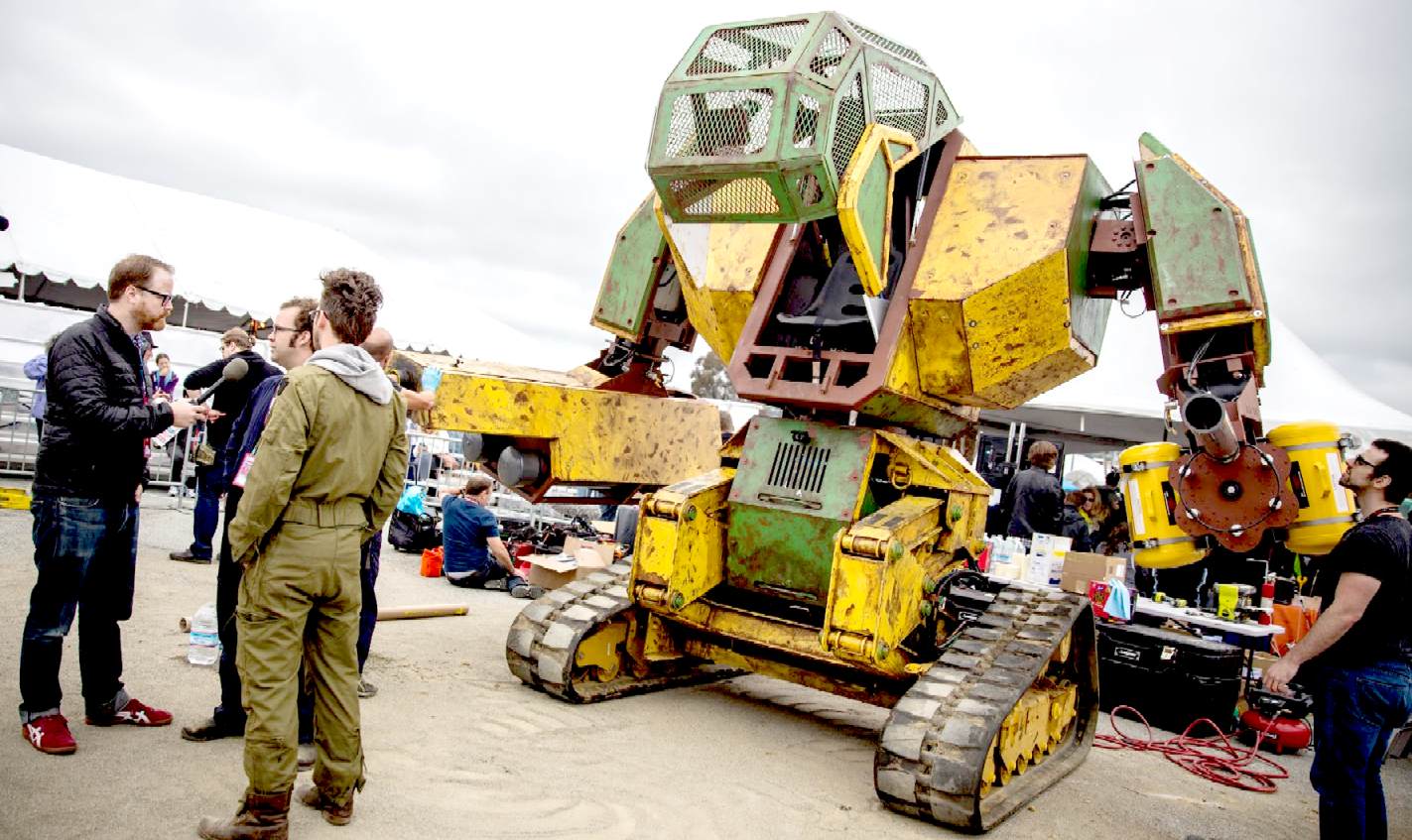
THE
GAUNTLET
- The team were interviewed about their plans to fight the Kuratas
machine. Not a bad paint job, the kind of "ratty" used look
that VW
enthusiasts go for. We would though suggest a bit more armour,
especially for the tank driver.
WHAT
IS A ROBOT?
Being
a human driven vehicle, the machines are not strictly speaking robots -
the media have latched onto the tag and hype that the MegaBots chaps
have run with. What that are, are incredibly slow motorised conveyances or fighting machines -
not robots. The Kuratas might be described as an Armoured Fighting
Vehicle (AFV). They only become robots when they are operated remotely
as drones, or autonomously. A robot is a mechanical or virtual artificial agent, usually an electro-mechanical machine that is guided by a computer program or electronic circuitry.
Robots can be autonomous or semi-autonomous and range from humanoids such as Honda's Advanced Step in Innovative Mobility (ASIMO) and TOSY's TOSY
Ping Pong Playing Robot (TOPIO) to industrial
robots, medical operating robots,
patient assist robots, collectively programmed swarm robots, UAV drones such as
General Atomics MQ-1 Predator, and even microscopic nano robots.
Robot = Noun: A machine capable of carrying out a complex series of actions automatically, especially one programmable by a computer.
We just wanted to clear that up because of the blurring created by such
films as Pacific Rim, etc. Whereas, the
robot in Short
Circuit, is a true robot (fictional of course).
BATTLE
UN-READY
Both
of these machines are so cumbersome that the DinoBot (Robotic
Prehistoric Ant) presently being
built in the UK would have no trouble dispatching both the MKII and the
Kuratas. The giant hexapod would literally run rings around them at high
speed, although the Kuratas can reach 10kph, that is on wheels on roads.
A fair fight would be on rough terrain to simulate battleground
conditions. On uneven ground the Kuratas would suffer traction problems
and most likely get bogged down. The MegaBot MKII would fare better, but
being so slow would not be competitive.
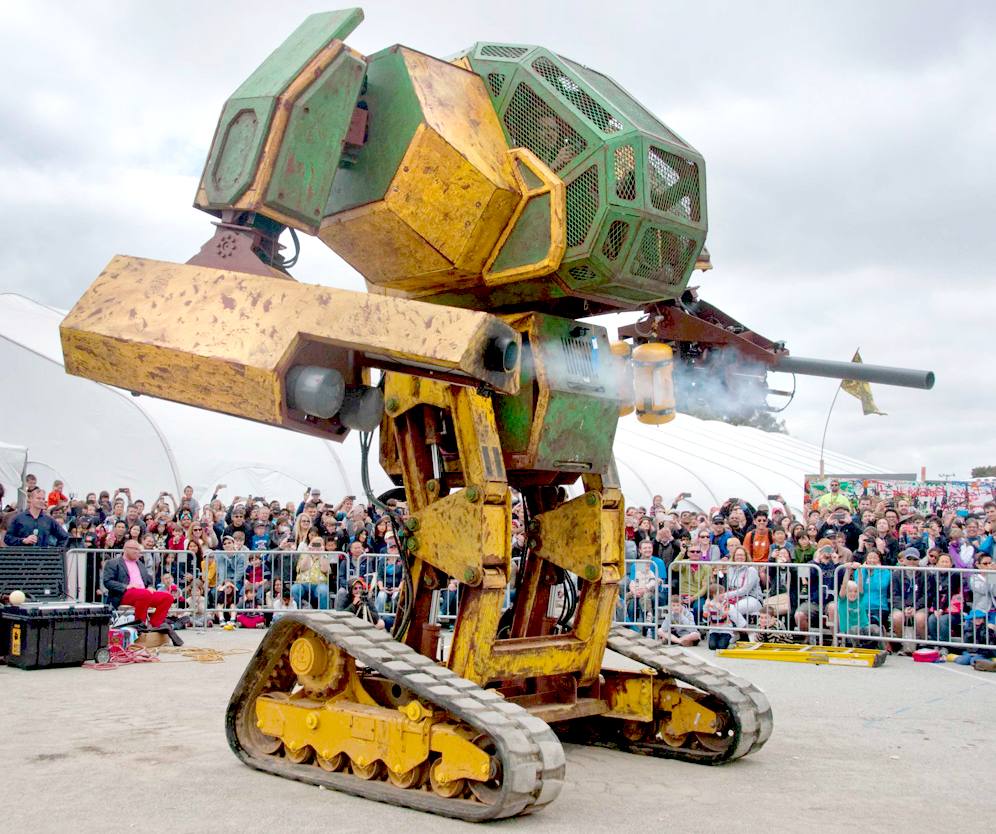
JULY 2015
- Crowds watched on as the MKI MegaBot fired its paintball guns. The
design reminds us of an ED209 from RoboCop.
IB TIMES JULY 6 2015 - CHALLENGE ACCEPTED
by Mary-Ann Russon
Robot fans, take heart. The days of the giant robot mecha suits might soon be upon us as the Japanese inventor of a giant robot has accepted a fighting challenge from the US.
Suidobashi Heavy Industry's founder Kogoro Kurata has accepted the video challenge issued by US robotics firm MegaBots on 30 June to take part in a giant robot fighting duel.
"We can't let another country win this, giant robots are Japanese culture," Kurata said in a video response to MegaBot's challenge.
"So yeah, I'll fight. But my reaction? Come on guys, make it cooler. Just building something huge and sticking guns on it is... super American."

CURIOUS
KURATAS
- We recognize some of the parts used on the Kuratas. Are those fork
lift truck wheels - in this case the possible Achilles
Heel of the design.
THE KURATAS
Suidobashi Heavy Industry is a robotics firm founded by Japanese blacksmith Kogoro Kurata, who has been researching large wearable robots similar to those seen in sci-fi anime franchise
Gundam and blockbuster film Pacific Rim since 2012.
Aided by Wataru Yoshizaki, a third-year doctoral student who developed V-Sido – a software operating system with advanced abilities to control the robot with, the duo were able to launch the Kuratas on Amazon
Japan in January for the princely sum of ¥120,000,000 (£627,000, €882,000, $978,000).
Although it is labelled as a "toy", the Kuratas robot stands 12.5ft (3.8m) tall, weighs five tonnes and has a top speed of 10kph.
It is designed to be manned by one person and features 30 hydraulic actuators and multiple onboard weapons systems, including a BB gatling gun that rattles off 6,000 rounds a minute and triggers when it detects the pilot smiling.
The Kuratas is still available to purchase on Amazon Japan, but there are now 147 reviews, including lots of humorous fake ones from
Japanese people who very likely have not bought the product.
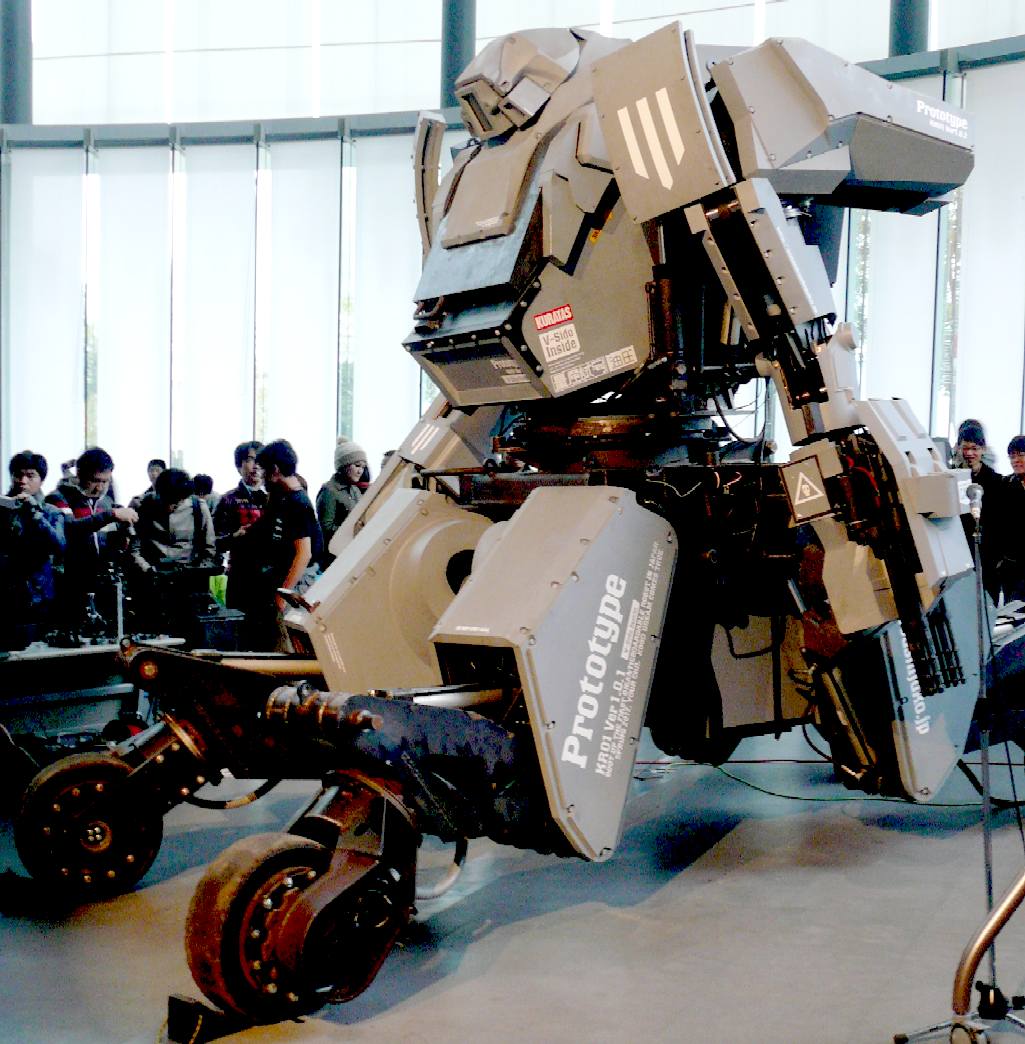
THE MEGABOTS MARK 2
The video challenge was issued by MegaBots Inc, a US start-up that failed to get enough funding in a Kickstarter campaign launched in November 2014, but has now received funding from 3D modelling software firm Autodesk to create a full prototype, the MegaBots Mark 2.
The prototype stands 15ft tall, weighs six tonnes and has a top speed of 193kph (120 miles). It is designed to be manned by two people and comes with a paintball cannon, as well as another cannon that can shoot free
T-shirts into a crowd of spectators.
The MegaBots Mark 2 beats the Kuratas in speed and weight but its founders admit they need more armour to protect them if they get shot at.
However, Kuratas is not keen on having an American-style gun slinging fight where the robots stand at a distance from each other.
"But you know, we really need Melee Combat [a fighting style where opponents are at a close range]. If we're gonna win this, I want to punch them and scrap and knock them down to do it," said Kuratas. "We accept. Megabots: Organise the duel. We'll be there."
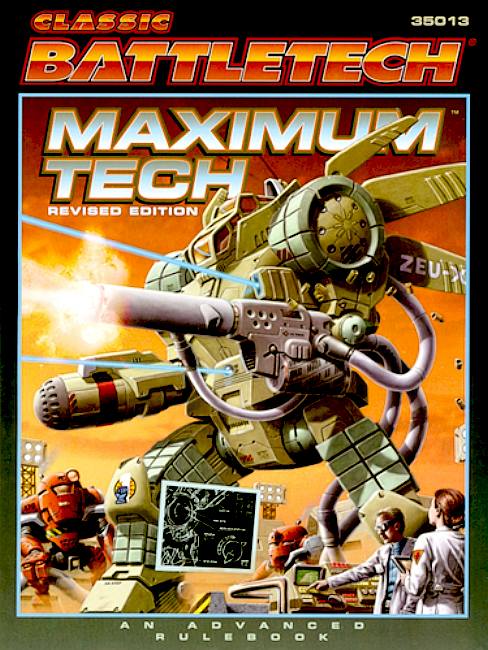
MECHA
Mecha may refer to a science fiction genre that centers on robots or machines controlled by people. These machines vary greatly in size and shape, but are distinguished from vehicles by their
humanoid or biomorphic appearance. Different subgenres exist, with varying connotations of realism. The concept of Super Robot and Real Robot are two such examples found in Japanese anime. The term may also refer to real world piloted humanoid robots / non-humanoid robotic platforms, either currently in existence or still on the drawing board (i.e. at the planning or design stage). Alternatively, in the original
Japanese context of the word (see Characteristics), 'mecha' may refer to mobile machinery/vehicles (including aircraft) in general, manned or otherwise.
The word "mecha" (メカ
meka?) is an abbreviation first used in Japanese of the word "mechanical". In Japanese, mecha encompasses all mechanical objects, including cars, guns, computers, and other devices, and the term "robot" (ロボット
robotto?) or "giant robot" to distinguish limbed vehicles from other mechanical devices. Outside of this usage, it has become associated with large robots with limbs or other biological characteristics.
While the distinction is often hazy, mecha typically does not refer to form-fitting powered armor such as Iron Man's suit. They are usually much larger than the wearer, like Iron Man's enemy the Iron Monger, and possess a cockpit from which they are operated.
In most fiction in which they appear, mecha are fighting machines: essentially armored fighting vehicles with a body instead of a vehicular frame. Some stories, such as the manga/anime series Patlabor and the American wargame BattleTech universe, also encompass mecha used for civilian purposes such as heavy construction work, police functions or firefighting. Mecha also see roles as transporters, recreation, advanced hazmat suits and other R and D applications.

Some science fiction universes posit that mecha are the primary means of combat, with conflicts sometimes being decided through gladiatorial matches. Others represent mecha as one component of an integrated military force, supported by and fighting alongside tanks, fighter aircraft, and infantry, functioning as a mechanical cavalry. The applications often highlight the theoretical usefulness of such a device, combining a tank's resilience and firepower with infantry's ability to cross unstable terrain. The Tactical Armors from Tactical Armor Custom Gasaraki (better known as Gasaraki) are a good example of this. In other cases they are demonstrated with a greater versatility in armament, such as in the Armored Core series of video games where mecha carry a wide range of armament spread across 4 "hard points" (both hands and 2 backpack sockets) albeit on a much larger scale. Another example is the anime Mobile Suit Gundam in which military forces have mecha known as "Mobile Suits", the series signature mecha being the RX-78 Gundam. In some continuities, special scenarios are constructed to make Mecha more viable than current-day status. For example, in Gundam the fictional Minovsky particle inhibits the use of radar, making long-range ballistic strikes impractical, thus favouring relatively close range warfare of Mobile Suits.
Mecha have been used in fantasy settings, for example in the anime series Aura Battler Dunbine, The Vision of Escaflowne, Panzer World Galient and Maze. In those cases, the mecha designs are usually based on some alternative or 'lost' science-fiction technology from ancient times. In case of anime series Zoids, the machines resemble dinosaurs and animals, and have been shown to evolve from native metallic organisms.
GE QUADRUPED & OTHER VEHICLES
There are a few prototypes of walking vehicles. Currently almost all of these are experimental or proof of concept, and as such may never see mass production.
A "walking vehicle" is a vehicle that moves on legs rather than wheels or tracks. Walking vehicles have been constructed with anywhere from one to more than eight legs. They are classified according to the number of legs with common configurations being one leg (pogo stick or "hopper"), two legs (biped), four legs (quadruped), and six legs (hexapod).
While the mobility of walking vehicles is arguably higher than that of wheeled or tracked vehicles, their inherent complexity has limited their use mainly to experimental vehicles. Examples of manned walking vehicles include General Electric's Walking truck, the University of Duisburg-Essen's ALDURO. Timberjack, a subsidiary of John Deere, built a practical hexapod Walking Forest Machine (harvester). One of the most sophisticated real-world walking vehicles is the Martin Montensano-built 'Walking Beast', a 7-ton quadrapod experimental vehicle suspended by four hydraulic binary-configuration limbs with much greater dexterity.
Some walking machines such as the BigDog, an autonomous robot, have been designed for the potential military applications. The largest walking machine ever made is the Big Muskie dragline excavator, used primarily in mining operations.
The Dragon of Furth im Wald, a quadrupedal animatronic dragon created for a German festival, was recognized by the Guinness Book of World Records as the "World's biggest walking robot". It is operated by remote control rather than a pilot.
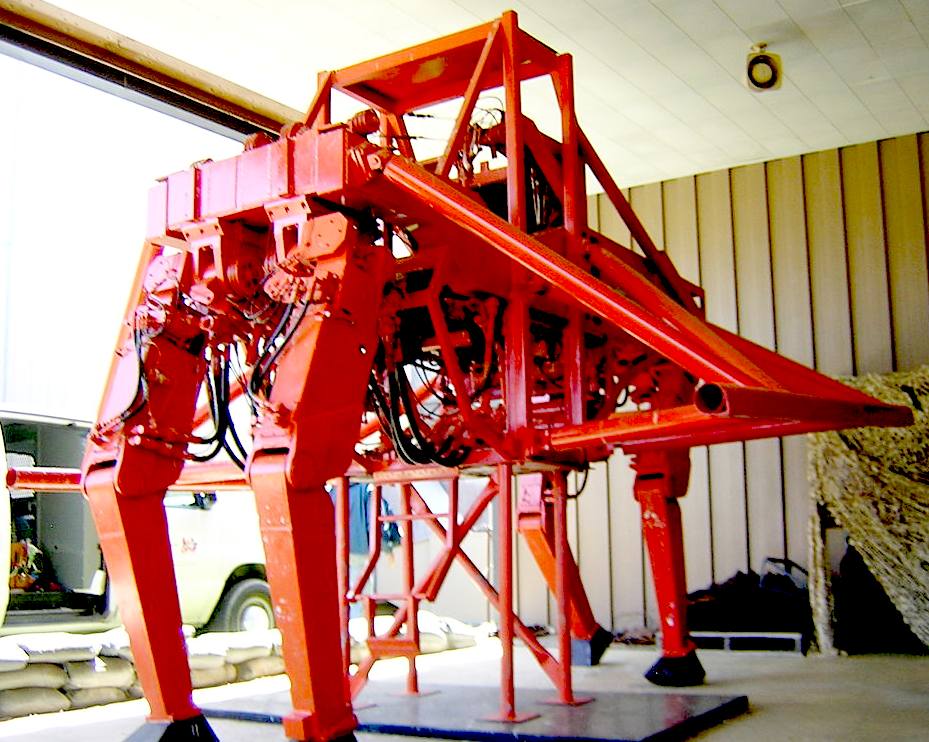
MANGA AND ANIME
In Japan, "robot anime" (known as "mecha anime" outside Japan) is one of the oldest genres in anime. Robot anime is often tied in with toy manufacturers. Large franchises such as Zoids and Gundam have hundreds of different model kits.
The size of mecha can vary according to the story and concepts involved. Some of them may not be considerably taller than a tank (Armored Trooper Votoms, Megazone 23, Code Geass), some may be a few stories tall (Gundam, Escaflowne, Bismark, Gurren Lagann), others can be as tall as a skyscraper (Space Runaway Ideon, Genesis of Aquarion, Neon Genesis Evangelion), some are big enough to contain an entire city (Macross), some the size of a planet (Diebuster), galaxies (Getter Robo, Tengen Toppa Gurren Lagann), or even as large as universes (Tengen Toppa Gurren Lagann: Lagann-hen, Demonbane).
The first giant robot seen was Mitsuteru Yokoyama's 1956 manga Tetsujin 28-go. However, it wasn't until the advent of Go Nagai's Mazinger Z that the genre was established. Mazinger Z innovated by adding the inclusion of futuristic weapons, and the concept of being able to pilot from a cockpit (rather than via remote control, in the case of Tetsujin). According to Go Nagai:
"I wanted to create something different, and I thought it would be interesting to have a robot that you could drive, like a car."
Mazinger Z featured giant robots which were "piloted by means of a small flying car and command center that docked inside the
head." It was also a pioneer in die-cast metal toys such as the Chogokin series in Japan and the Shogun Warriors in the U.S., that were (and still are) very popular with children and collectors.
Robot/mecha anime and manga differ vastly in storytelling and animation quality from title to title, and content ranges all the way from children's shows to ones intended for an older teen or adult audience.
Some robot mecha are capable of transformation (Macross, Zeta Gundam, Transformers) or combining to form even bigger ones (Beast King GoLion and Tengen Toppa Gurren Lagann). Go Nagai is also often credited with inventing this in 1974 with the television series Getter Robo.
Not all mecha need be completely mechanical. Some have biological components with which to interface with their pilots, and some are partially biological themselves, such as Neon Genesis Evangelion, Eureka Seven, and Zoids.
Mecha based on anime have seen extreme cultural reception across the world. The personification of this popularity can be seen as 1:1 size Mazinger Z, Tetsujin, and Gundam statues built across the world.
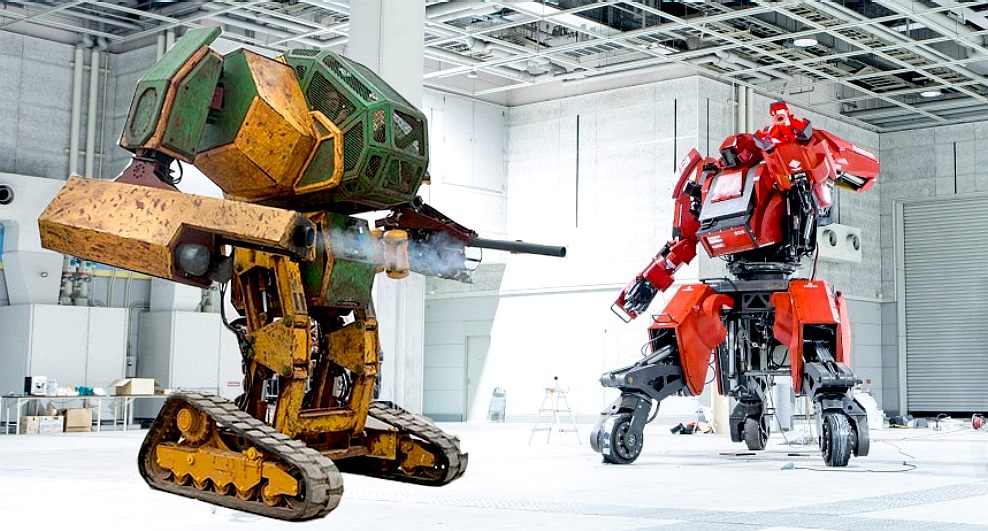
THE
GAUNTLET
- One of the first things to agree on rule wise, is where a fight should
take place. If on tarmac, the Kuratas has the advantage, if on rough
ground, the MKII has it.
MORE ABOUT THE KURATAS
Kuratas is a rideable and user-operated robot built by the Japanese company Suidobashi Heavy Industry. Billed as "the world's first giant boarding robot", the Kuratas was unveiled when the website was opened in 2012. It was demonstrated at Wonder Festival. In June 2015, MegaBots challenged Suidobashi Heavy Industry to its first robot duel confronting Kuratas versus their Mark II.
The vehicle weighs approximately 4,500 kg, and is approximately 4 meters high.
It can be crewed by one person; that operator would sit in the "body" of the robot in a seat, with the control device in front of them. The Kuratas can also be controlled externally by
remote control.
Kuratas sports a four-wheeled, thirty joint exoskeleton. which is controlled by the pilot or can be controlled remotely. The remote operator uses a 3g touch screen phone as the primary interface. The on-board pilot's user interface (UI) is a Kinect based device.
The vehicle can be "armed" with multiple weapons, such as a 6,000 round per minute twin BB rotary cannon, a "LOHAS" launcher which fires either water bottles or possibly fireworks, and a powered humanoid hand called the "iron crow" that is capable of picking up objects, and is linked to the pilot by "what appears to be a Mattel Power Glove". The main Suidobashi website lists two other "weapons", a "Kuratas Handgun", and a "Pilebunker".
Currently, the Kuratas is not capable of walking, but is able to drive on its four wheels at around 10 km/h.
As of 25 April 2013, Kuratas has a price tag of US$1,353,500 (¥134,555,495, or €1,040,976).
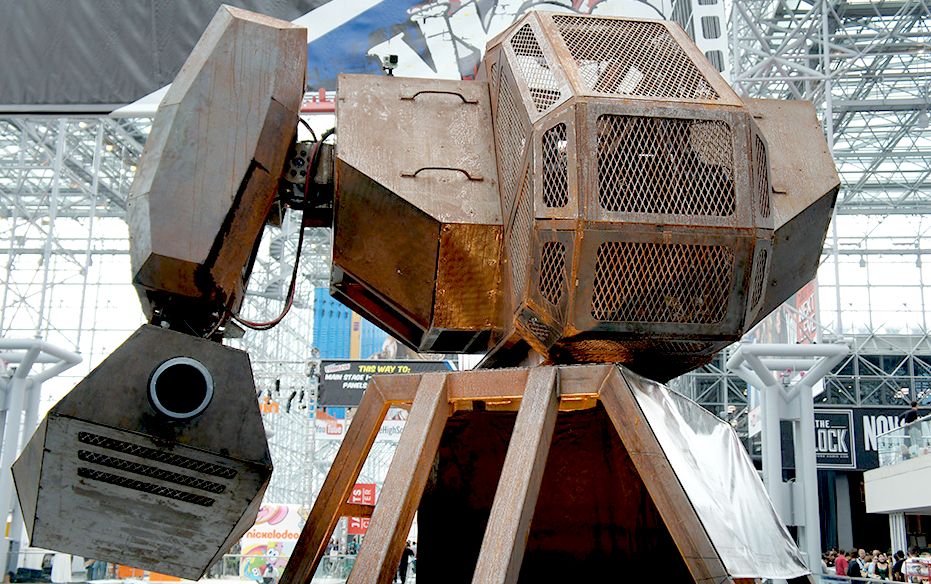
DRESSAGE
- The MegaBot looked better in this guise in our opinion. Green and
yellow is for building sites. Mean it up a little chaps.
DEVELOPERS
The Kuratas robot was developed by artist Kogoro Kurata (after whom the suit is named), and roboticist Wataru Yoshizaki.
Kurata stated that he was inspired by the mecha frequently featured in anime, especially those of the series Armored Trooper Votoms, which he watched as a
child. "When I was a kid, I thought there were going to be giant robots in the future. But no matter how long I waited, people were only able to make small robots, like Asimo. Eventually, I thought ‘I can’t wait anymore,’ and set out to make one
myself." Kurata's goal was to create a piece of art that emulated the mecha he had watched growing up.
Yoshizaki was brought onboard the project to create the software for the robot's movement and pilot interaction.
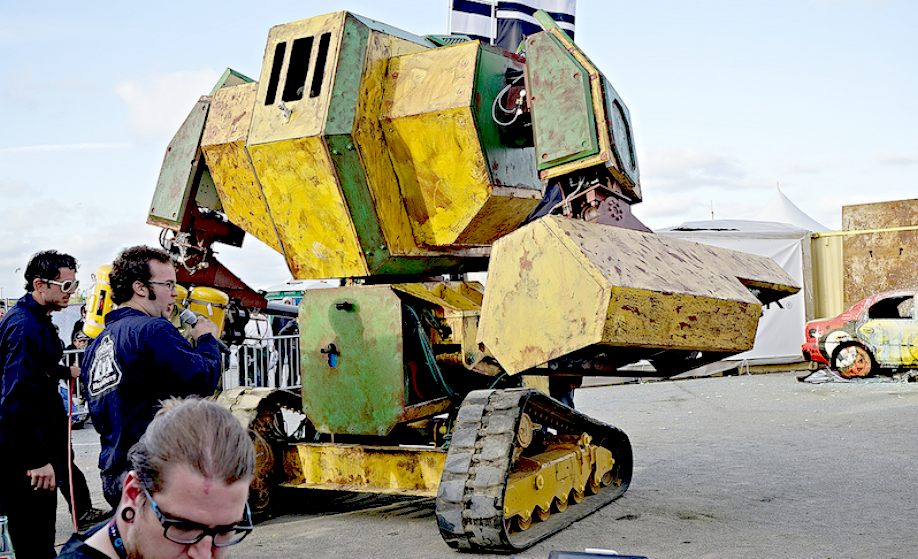
BOB
THE BUILDER
- Green and yellow is for building sites. Why they painted what was a
brilliant macho statement is beyond us. Save to prevent further
corrosion.
DAILY MAIL 29 JULY 2012
Dial carefully! Meet Kuratas, the million dollar robot which weighs four tons, shoots when you smile and is controlled by iPhone
A Japanese electronics company has unveiled a 13ft super-robot which can be controlled by an
iPhone.
But be careful with the jokes if you are on the phone to the pilot as the robot, made by Suidobashi Heavy Industry in Tokyo, brings a whole new meaning to ‘trigger-happy’.
'Kuratas' is fitted with a futuristic weapons system, including a gatling gun capable of shooting 6,000 BB bullets a minute, which fires when the pilot smiles.
Kuratas, made by Suidobashi Heavy Industry, can be controlled either through the one-man cockpit or from the outside using any smartphone connected to the 3G network.
The robot, which is set will go on sale for £900,000, has around 30 hydraulic joints which the pilot moves using motion control.
As it is made to order the style conscious buyer will not have to worry about sticking to the grey exterior - it comes in 16 colours, including black and pink, and for an extra £60 they will sort you out with a cup holder.
Engineers Wataru Yoshizaki and Kogoro Kurata were saluted in front of Kuratas together with their pilot Anna when they showcased the robot at the Wonder Festival in Chiba, suburban
Tokyo earlier today.
The team have been working on the robot since 2010.
The company also released a video where very attractive Anna gives step by step instructions of how to operate the Kuratas.
Their video reminds the viewer of the security instructions on an airplane with Anna taking on the role as futuristic airhostess.
If you are not the piloting kind of millionaire, Kuratas can be operated using what Suidobashi calls the ‘Master-Slave system’ where you control the robot’s movements from outside using any device with a 3G network such as an iPhone.
‘Automatic alignment allows you to lock on your enemy target. Kuratas will not allow any targets to escape.
'With the alignment set appropriately the system will fire BBs when the pilot smiles.’
Realising that there may be a flaw with this system of opening fire, the video warns the pilot against smiling too much whilst operating the Kuratas weaponry.
Kurayas is 13ft tall and weighs four tons – not including the pilot.
The four wheeled legs ensures that it is easy to transport and the pilot will be able to drive it at a top speed of just under 6.5 mph.
by Sara Malm
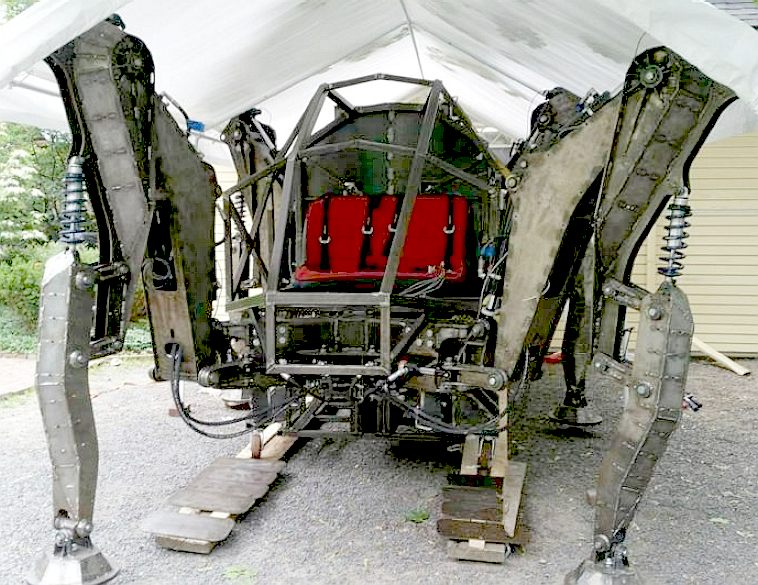
STOMPY
1 JUNE 2015
-
In April 2015 Stompy moved under computer control for the first time. The team moved the giant “mech” from the Somerville workshop as Stompy’s width grew to 18 feet — roughly the equivalent of a lane-and-a-half on the highway. After strapping it to a flatbed truck, they transported it to a team member’s driveway, stashing it under a carport for safekeeping.
Engineers and software developers are focusing on programming Stompy to stand on its own and eventually getting its legs to crawl forward at speeds of up to 3 miles per hour.
THE GUARDIAN - NOVEMBER 16 2015
Megabots v Kuratas: US and Japan battle it out for robot supremacy
They’ve been popularized in movies, television and video games, but giant fighting robots still haven’t left the realm of science fiction. That will soon change.
Megabots Inc, an Oakland, California-based startup, has built a 15ft (4.5m) mechanical
gladiator called the Mark II and challenged a Japanese firm to an international battle for
robot supremacy.
Tokyo-based Suidobashi Heavy Industries, maker of the 13ft (4m) Kuratas, accepted the challenge, setting the stage for the first giant robot battle of its kind next year. The exact date and location are yet to be determined.
Win or lose, it’s all part of Megabots’ plan by to make gladiator-style robot combat into big-time entertainment – a mix between Ultimate Fighting Championship and Formula One auto racing – while developing new industrial technologies and inspiring a new generation of engineers.
The Megabots founders envision a sports league where teams from around the world build huge humanoid robots that throw each other down in stadiums filled with screaming fans.
“Everyone wins as long as there is robot
carnage,” said Megabots co-founder Matt Oehrlein, an electrical engineer. “People want to see these things fight. They want to see them punch each other, they want to see them ripped apart and they want to be entertained.”
Megabots was launched in 2014 by Oehrlein, Gui Cavalcanti and Brinkley Warren, who grew up playing video games like “MechWarrior” and “BattleTech”, and wanted to fulfill their dreams of watching massive machines fight.
“We want to bring the giant robots from science fiction and movies and video games to life because now we have the technology,” said Cavalcanti, a robotics engineer. “It’s really about: How do we put on the best show? How do we make the coolest fight?”
Inside a cavernous Oakland workshop, the Megabots founders built the Mark II – a 12,000lb (5,443kg) behemoth with tank treads, two-pilot cockpit and missile launcher that fires canon ball-sized
paintballs.

ROBOCRAFT
- Is an online third-person vehicle shooter game set on fictional areas of different planets where players construct machines that are used to fight with others in battles. It is currently an open-alpha game, and is being developed and published by the indie video game developer Freejam Games based in the United Kingdom. The game features contained garages in which players can build various functional vehicles with basic block-based parts (such as cubes and wheels) along with weapons that can be used for combat. The initial alpha build was released in March 2013, featuring a single-player building and test mode. In April 2013, Freejam Games released multiplayer combat, which is now the core content of the game. Content updates and bug fixes for the game are released a few times each month. On April 14, 2014, the company revealed that Robocraft had gained over 300,000 players in a few months; the game continues to attract many players, notably, international players from non-English speaking countries. It is also available as a Steam platform release.
Many forums are available for players such as the Steam forums, Robocraft forums and Tieba, a
Chinese forum with around 5000 players.
Then Oehrlein called out Suidobashi in a YouTube video: “We have a giant robot. You have a giant robot. You know what needs to happen. We challenge you to a duel.”
Suidobashi’s founder Kogoro Kurata accepted in his own video: “We can’t let another country win this. Giant robots are Japanese culture. Yeah, I’ll fight. Absolutely.”
Kurata also taunted the Megabots team: “Come on guys, make it cooler. Just building something huge and sticking guns on it, it’s super American.”
The Megabots robot isn’t quite ready to take on Kuratas, a more polished fighting machine with a big, agile hand that mimics the movements of the pilot’s hand.
“Our current robot, the Mark II, looks pretty intimidating,” Oehrlein said. “The truth is, it’s pretty slow. It’s top-heavy. It’s rusty, and it needs a set of armor upgrades to be able to compete in hand-to-hand combat.”
That’s why Megabots launched an online Kickstarter campaign and raised more than
$550,000 from robot fans to turn the Mark II into a real fighting machine – faster, tougher, more balanced and equipped with detachable weapons such as a giant
chain saw or punching fist.
The startup has enlisted the help of engineers from Nasa, software maker Autodesk, the TV shows Mythbusters and BattleBots.
“We’re absolutely confident that Team USA can beat Japan. We’ve assembled the best of the best of this country. We’re not going to let our country down,” Calvalcanti said.
Robot enthusiasts such as Gordon Kirkwood are eagerly anticipating the fight.
“I think it’s going to be a smash hit,” said Kirkwood, a robotics engineer in San Francisco. “This has the potential to be a fantastic spectator sport that people would really pay good money to see.”
KICKSTARTER
PROJECT LAUNCH AUGUST 18 2015
With help from all their MegaFans they made it, with 7,857 backers giving $554,592!
As a result of this funding success the team pledged to upgrade the MkII to be at least five times faster, five times more powerful, and fully equipped for melee and ranged combat!
When
they asked their Twitter followers and
Facebook page who they wanted in the cockpit of the
Mk.II, the answer was overwhelming: Arnold
Schwarzenegger. They agreed completely - he's one of
their childhood heroes! He's the personification of an American love for guns, and the coming robot apocalypse!
They then realized that in order to upgrade the robot, they were going to have to take
their brand new guns off the Mk.II. So, what better way to celebrate the removal of our big beautiful guns than by having Arnold Schwarzenegger fire the first (and last) full salvo with
their cannon and missile launcher. We're not sure if Arnie could make
it, but using a Terminator
seems like a reasonable idea.

THE
MANTIS - Compare Stompy with Matt Denton's giant hexapod. Stompy
may be a little bigger and has two seats, otherwise, the concept is
similar. Matt Denton, from Hampshire, estimates his "very expensive toy" has cost him hundreds of thousands of pounds.
In April 2013 Matt told the BBC
that a mining company and a marine research organisation are now interested in his design and he hopes it might be used at science fairs.
During its development the machine had one outing, at a music festival, where Mr Denton says it was well received.
"It's an entertainment vehicle," he said in 2013. "But I hope it will inspire people."
The project was only initially intended to take 12 months, Mr Denton, who usually specialises in small-scale animatronics for the
film
industry, said. "After 18 months we tried the model out. We had to completely strip out and rebuild the legs. They were too heavy and complicated.
Image caption Animatronics expert Matt Denton says his machine's legs are inefficient.
"I'm a software and electronics engineer so this was out of my area - I had to learn fast."
The robot, driver-operated by joysticks within a cockpit, can only travel at 1.5km/h (1mph) and manage a distance of 5km on a 20-litre (4.5-gallon) tank of diesel.
"It's not about miles to the gallon, it's about gallons to the mile," he said.
"It wasn't built to be efficient and fast. It was built to look cool and insect-like and fun."
"But legs are very inefficient - the wheel was invented for a
reason."
Bluebird
Marine Systems Comment
Guys,
absolutely terrific idea. We followed Matt Denton's "Mantis"
project in the UK, and Stompy in the US, both hexapods. We love the
Aliens crossed with Mecha/Jaeger/Avatar designs. Impractical yes,
but simply fantastic fun.
We
are working on a giant (not so big as yours) robot ant (DinoBot) that
may also
fire paintballs.
Keep
up the good work and very best of luck to both teams from all of us here in the UK.
BMS
Ltd


LINKS
& REFERENCE
The
Guardian technology 2015 November 16 megabots kuratas US Japan robot
challenge
IB
Times
challenge-accepted-japanese-mecha-kuratas-will-fight-us-megabots-giant-robot-duel
Youtube watch
Wikipedia Kuratas
Wikipedia Mecha
Facebook megabots inc Kickstarter
projects megabots support-team-usa-in-the-giant-robot-duel Megabots Dailymail
UK
Dial-carefully-Meet-Kuratas-million-dollar-robot-weighs-tons-shoots-smile-controlled-iPhone Kickstarter
projects stompy the giant rideable walking robot Twitter
RoboCraft Game Robocraftgame
real life robot battles robocraft and megabots inc join forces Wikipedia
Robocraft https://en.wikipedia.org/wiki/Robocraft http://robocraftgame.com/real-life-robot-battles-robocraft-and-megabots-inc-join-forces/ https://twitter.com/RoboCraftGame https://www.facebook.com/ https://twitter.com/ http://www.dailymail.co.uk/home/search.html?s=&authornamef=Sara+Malm http://www.theguardian.com/technology/2015/nov/16/megabots-kuratas-us-japan-robot-challenge
http://www.ibtimes.co.uk/challenge-accepted-japanese-mecha-kuratas-will-fight-us-megabots-giant-robot-duel-1509581
https://www.youtube.com/watch?v=29MD29ekoKI
https://en.wikipedia.org/wiki/Kuratas
https://en.wikipedia.org/wiki/Mecha
https://www.facebook.com/megabotsinc/ http://www.theguardian.com/technology/2015/nov/16/megabots-kuratas-us-japan-robot-challenge https://www.kickstarter.com/projects/megabots/support-team-usa-in-the-giant-robot-duel https://www.megabots.com/ http://www.dailymail.co.uk/sciencetech/article-2180628/Dial-carefully-Meet-Kuratas-million-dollar-robot-weighs-tons-shoots-smile-controlled-iPhone.html
http://www.kickstarter.com/projects/projecthexapod/stompy-the-giant-rideable-walking-robot-0

ANTICS
- ARMOUR
- ARTWORK
- BIOLOGY
- COMPUTERS - ELECTRONICS - ENERGY - FRAME -
HEAD - JAWS - KITS -
LEGS - MECHANICS
- MOTORS - MOVIE
- R/C DRONE -
SENTRY - SOFTWARE -
SPEED -
SUSPENSION - WEAPONS
- WARGAMING
DINOSAURS
- DOLPHINS
- HUMANOIDS
- RAYS
- SHARKS
- WHALES
|














